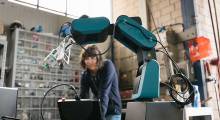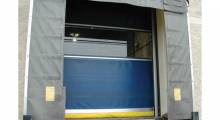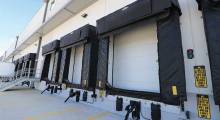Retailers’ non-compliance fines for labels with unscannable bar codes can cost suppliers hundreds of thousands of dollars in chargebacks annually, says Andy Edwards, director of product management at Printronix Auto ID. “Additionally, there’s been a significant increase in regulatory requirements for label data and accuracy,” he notes.
Until now, however, the only way suppliers could confirm that their 1D and 2D bar codes and labels placed on cases and pallets complied with each retailer’s minimum ISO grade standard was to piece together a printer and separate scanning technology. “Those solutions include either handheld or fixed-mount bar code readers, which don’t evaluate quality,” Edwards continues.
For that reason, Printronix engineered the ODV-2D, a bar code grading and validation system built into the company’s T8000 4-inch thermal label printer. The streamlined, all-in-one system uses a high-resolution camera to quickly capture an image of each label as it prints. Each image is analyzed instantly, with both 1D and 2D bar codes located automatically with proprietary Barcode GPS software, then decoded and graded.
“If the system detects a bar code whose quality does not meet the required grade standard, the printer overstrikes the entire label with a checkerboard pattern and then reprints a new one,” Edwards continues. “If a pre-set number of consecutive reprints aren’t compliant, the printer stops and sends an alert to operators.”
Capable of validating up to 50 bar codes per label at 100% accuracy, the ODV-2D also stores a detailed report about each label printed. “Should a chargeback be issued, the supplier can provide proof that the label was intact when it left the facility,” he says.
Edwards notes that the system is also ideal for meeting regulatory requirements associated with traceability mandates for marking of medical devices with a unique device identifier (UDI). “The printer verifies that the mark—typically a 2D bar code—meets the minimum grade requirement set by the Food and Drug Administration (FDA) for Class I and Class II medical devices, such as surgical instruments and infusion pumps,” he says.
Likewise, the system is ideal for direct label part marking of automotive components, such as airbags and seatbelts, for traceability purposes in case of a recall. “We also see opportunities for the ODV-2D in the food industry,” adds Edwards.
Article topics








